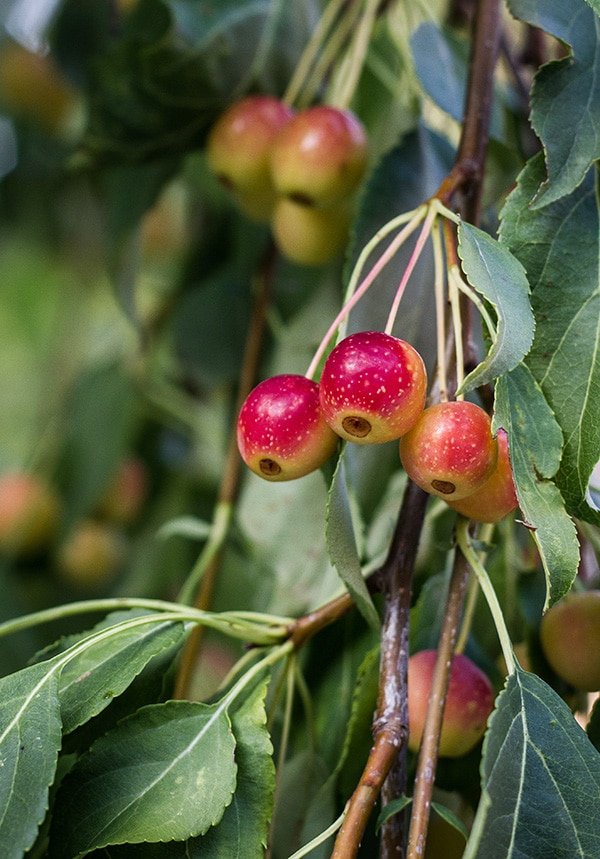
I would need an advanced degree in science to be adequately knowledgeable about the plant infections and leaf diseases that pop up every year in my garden. Instead, I try to recognize the leaf diseases that are likely to be seriously damaging, and those that are merely seasonal effects. Diseases arising in cool, wet and cloudy spring months are more damaging. Examples are bacterial fire blight in apple trees (resulting in brittle dead twigs and branches) and anthracnose fungus in maple and oak trees (causing some buds to die, and reddish or dark brown blotches on young foliage).
Diseases appearing in fall are unsightly, but generally less destructive. Cool nights and warm days in autumn are perfect for invigorating the many biological organisms that live on plant leaves. These mostly fungal pathogens (with some bacterial and virus critters in the mix) are legitimate partners in natural garden ecology. They’re effective at decomposing leaf tissues and contribute the resulting humus to the soil. Humus is a valuable constituent of soil, helping to create soft, friable texture that roots can penetrate and allowing moisture to be held in the root zone. We want more humus!
Leaf diseases aren’t particularly attractive. Clumps of phlox and bee balm turned a ghostly grey by powdery mildew (Erysiphe cichoracearum and Sphaerotheca humuli) aren’t a pretty sight. Powdery mildew appears in late summer, spreading a whitish powder on foliage and progressing from lower to upper leaves. But the disease does no permanent damage, and perennials will return next year in fine condition. (Look for disease-resistant cultivars if you don’t want to see mildew in autumn, or spray with a copper fungicide.) The same can be said for powdery mildew on lilacs — no resulting permanent damage. Pruning surrounding shrubs and trees to provide better air circulation can possibly reduce powdery mildew. (Downy mildew is another, and more serious, group of mildew diseases that appear in spring.)
I have a small forest of Japanese maples scattered through my garden, and they’ve all got leaves with curling and crisping edges. There are probably several fungal diseases together at work on these leaves, invigorated by the return of rain in late summer. The maple trees in the park across the road have tar spot (Rhytisma acerinum), half-inch (1-cm) shiny black spots on most of their leaves. These infected leaves all end up in the mulch I spread through the garden, and the composting process brings their disease activity to a natural conclusion.
But there are some leaves carrying disease pathogens that can re-infect plants next spring, and these should be gathered up and removed from the garden. There are two serious culprits — crabapple trees infected with scab (Venturia inaequalis), which appears as drab olive green spots on leaves and fruits, causing them to distort and fall prematurely; and roses suffering from blackspot (Diplocarpon rosae) diseases, with black spots on yellowing leaves. If these diseased leaves are allowed to accumulate on soil under and around the plant, their spores will remain active until next spring. Raindrops falling in May and June hit the leaves, causing small explosions of spores to be hurled upward and begin a new season of infection. We can be calm and philosophical about most decaying fall foliage, but be sure to collect and dispose of infected apple and rose leaves. Fortunately, there are many selections of apple trees (like my ‘Red Jade’ weeping crabapple) and rose shrubs that are strongly resistant (though not immune) to leaf infections. It takes a mighty amount of seasonal stress to induce disease in these resistant cultivars.
